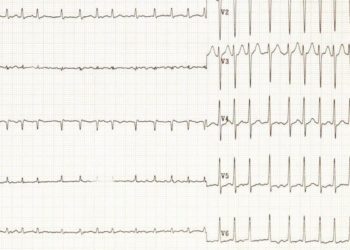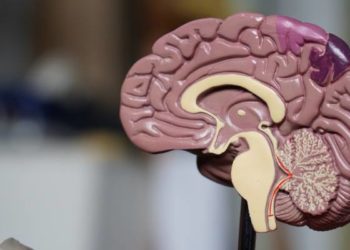2 Minute Medicine Rewind March 18-24, 2014
Image: PD
In this section, we will highlight the key high-impact studies, updates, and analyses published in medicine during the past week.
Multitarget Stool DNA Testing for Colorectal-Cancer Screening
The characteristics of colorectal cancer, including orderly slow progression, make it well-suited for preventative screening. However, there remains a need for more accurate and less invasive screening methods. This investigation considers the efficacy of a multi-target stool DNA test for colorectal cancer screening. In this cross-sectional study, 9989 patients of average cancer risk donated stool samples, which were subsequently analyzed by both multi-target DNA testing and fecal immunochemical testing (FIT). The patients were then screened by colonoscopy. Using colonoscopy findings as the gold standard, investigators found that for detecting colorectal cancer, DNA testing had a sensitivity of 92.3% compared to 73.8% for FIT (p = 0.002). For precancerous lesions, the sensitivities were 42.4% and 23.8% for DNA and FIT respectively (p < 0.001). The specificity of the DNA test was 86.6% compared to 94.9% (p < 0.001). This study demonstrates that a multi-target stool DNA test may be a feasible option for increasing the sensitivity of non-invasive screening tests for colorectal cancer but would likely produce an increase in false positives when compared with using FIT.
Hemicraniectomy in Older Patients with Extensive Middle-Cerebral-Artery Stroke
Large middle-cerebral-artery strokes cause brain edema that is associated with herniation and an 80% mortality rate within the first week. Previous analyses have shown benefit in outcomes after hemicraniectomy in patient populations under 60 years old. This study sought to confirm whether similar results could be shown for patients over 60. In this randomized control trial, investigators randomized 112 patients over 60 years old with middle-cerebral-artery infarction to either hemicraniectomy or conservative treatment. Researchers found that the survival rate was 38% in the intervention group compared to 18% with the control group (odds ratio 2.91, 95% CI 1.06 – 7.49, p = 0.04). Using the modified Rankin scale, 7% of the intervention group vs. 3% in the control group had a score of 3 (moderate disability), 32% vs. 15% had a score of 4 (moderately severe disability), 28% vs. 13% had a score of 5 (severe disability). This study therefore shows that hemicraniectomy can improve survival and decrease the rate of severe disability in patients older than 60 years old who develop large middle-cerebral-artery strokes.
Age-Adjusted D-Dimer Cutoff Levels to Rule Out Pulmonary Embolism The ADJUST-PE Study
D-dimer levels are useful for ruling out the presence of pulmonary embolism (PE). However, their value diminishes in older patients because of naturally higher levels of D-dimer with age. Investigators sought to validate an age-adjusted D-dimer cutoff for elderly patients, defined as age x 10 in patients > 50 years old. In this prospective study, 3346 patients with clinically suspected PE were treated according to the higher age-adjusted D-dimer cutoff and then followed up after a 3-month period for thromboembolic events. Researchers found that 28.2% of the patients had a D-dimer level lower than the conventional 500 µg/L cutoff and 11.6% of patients had a D-dimer level between 500 µg/L and the higher age-adjusted cutoff. Among these patients who were ruled out because of the higher cutoff, only 0.3% (95% CI 0.1 – 1.7%) of patients had a thromboembolic event. When looking at the patients who were older than 75 with a nonhigh D-dimer level, the proportion of patients who were ruled out went from 6.4% (95% CI 4.8%-8.5%) to 29.7% (95% CI 26.4%-33.3%) using the new higher cutoffs, without any additional thromboembolic events on follow-up. This study therefore shows that an age-adjusted D-dimer cutoff can effectively help rule out more patients for PE with a low likelihood of introducing false negatives.
Application of New Cholesterol Guidelines to a Population-Based Sample
The American College of Cardiology and the American Heart Association (ACC-AHA) recently released the 2013 guidelines for cholesterol treatment, which expanded the indications for statin therapies for preventing cardiovascular disease. This study sought to understand the impacts of these expanded recommendations on statin use. Investigators used data from the NHANES study to extrapolate lipid levels to the US population of adults between the ages of 40 and 75 years and then applied the Third Adult Treatment Panel (ATP III) National Cholesterol Education Program guidelines to this population as well as the new ACC-AHA guidelines. The study found that when compared with the ATP III guidelines, the ACC-AHA guidelines increased the number of U.S. adults eligible for statin therapy from 43.2 million (37.5%) to 56.0 million (48.6%). The majority of this increase (10.4 to 12.8 million) would be among adults with no cardiovascular disease. When considering adults currently aged 60 to 75 who have no cardiovascular disease and take no statins, the proportion who would be eligible for statin therapy increased from 30.4% to 87.4% among men and from 21.2% to 53.6% among women when changing from ATP-III to the ACC-AHA guidelines. The study shows ultimately that the ACC-AHA guidelines would significantly increase the recommended statin use and that most of this increase is among older adults with no cardiovascular disease.
With medical care advances, more patients are surviving critical illness and may have subsequent increased risks of mental illness. Investigators sought to elucidate the relationship between critical illness and psychiatric diagnoses. In this Danish cohort study, data was analyzed from 24,179 critically ill patients who had been admitted to the intensive care unit with mechanical ventilation. Researchers found that 6.2% of these patients had at least 1 psychiatric diagnoses within the previous 5 years compared to 5.4% of general hospital patients (adjusted prevalence ratio 1.31, 95% CI 1.22-1.42, p < 0.001). Among those with no psychiatric history, the risk of a new psychiatric diagnosis for critically ill patients was 0.5% within the first 3 months compared to 0.2% among general hospital patients (adjusted hazard ratio 3.42, 95% CI 1.96-5.99, p < 0.001) and 0.02% among the general population (adjusted HR 21.77, 95% CI 9.23 – 51.36, p < 0.001). There was also a significantly increased risk of new psychoactive medication prescription within the first 3 months among the critically ill patients. The differences between critically ill and general hospitalized patients, though, resolved after 9 to 12 months following discharge. This study therefore demonstrates that critically ill patients are more likely to have a psychiatric diagnosis prior to becoming ill. Critical illness also has a short-term increased risk of psychiatric illness, but this risk distinguishes within a year.
© 2012-2014 2minutemedicine.com. All rights reserved. No works may be reproduced without written consent from 2minutemedicine.com. Disclaimer: We present factual information directly from peer reviewed medical journals. No post should be construed as medical advice and is not intended as such by the authors or by 2minutemedicine.com. PLEASE SEE A HEALTHCARE PROVIDER IN YOUR AREA IF YOU SEEK MEDICAL ADVICE OF ANY SORT. Content is produced in accordance with fair use copyrights solely and strictly for the purpose of teaching, news and criticism. No benefit, monetary or otherwise, is realized by any participants or the owner of this domain.









